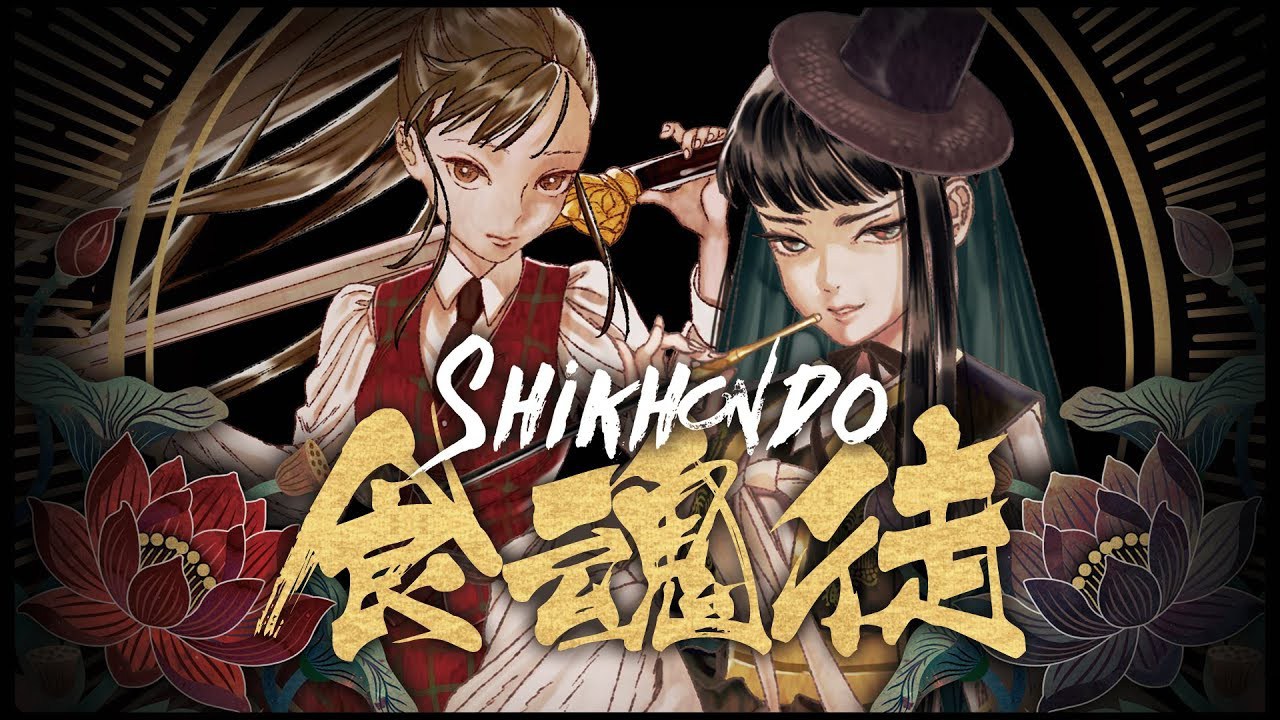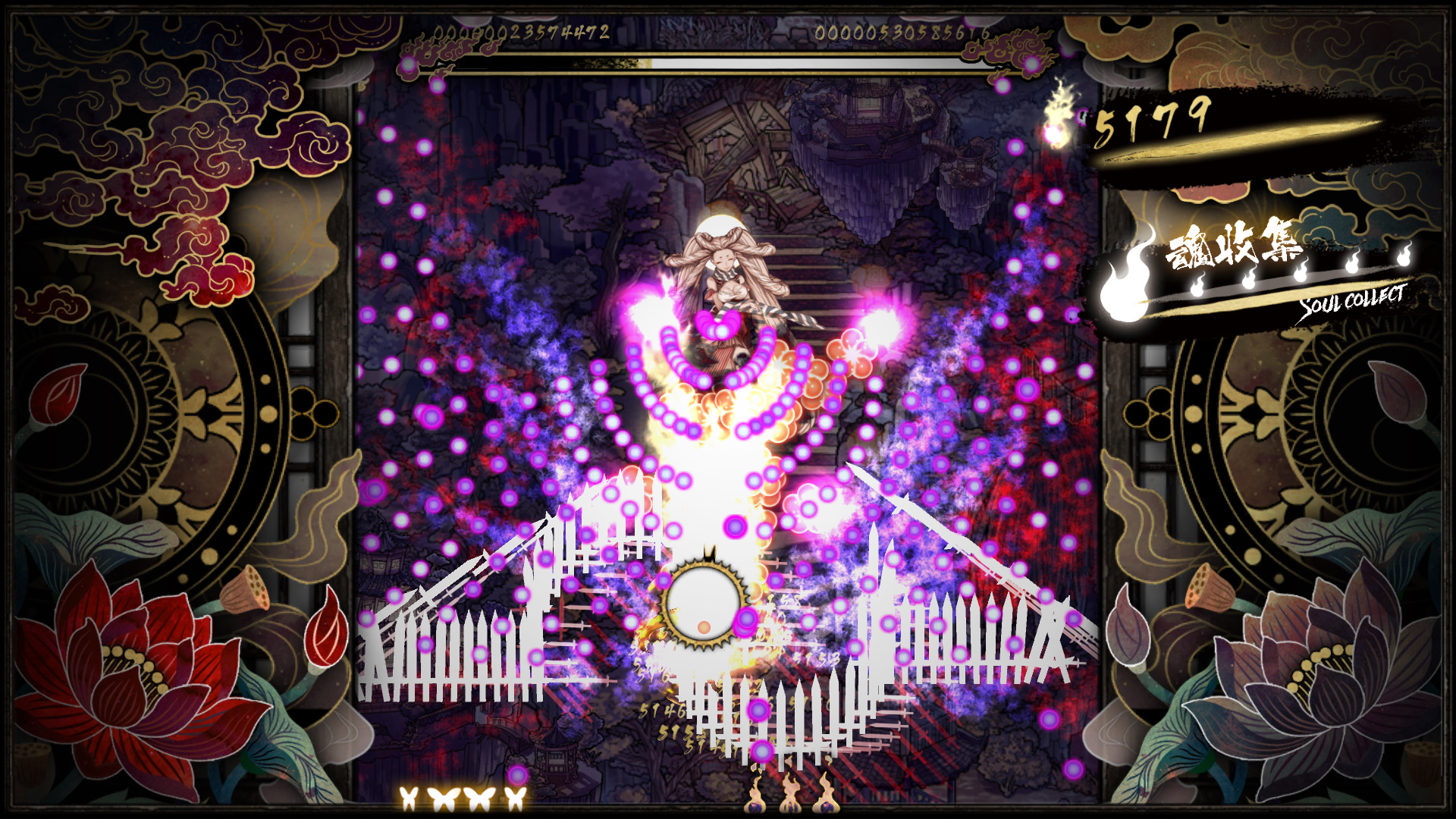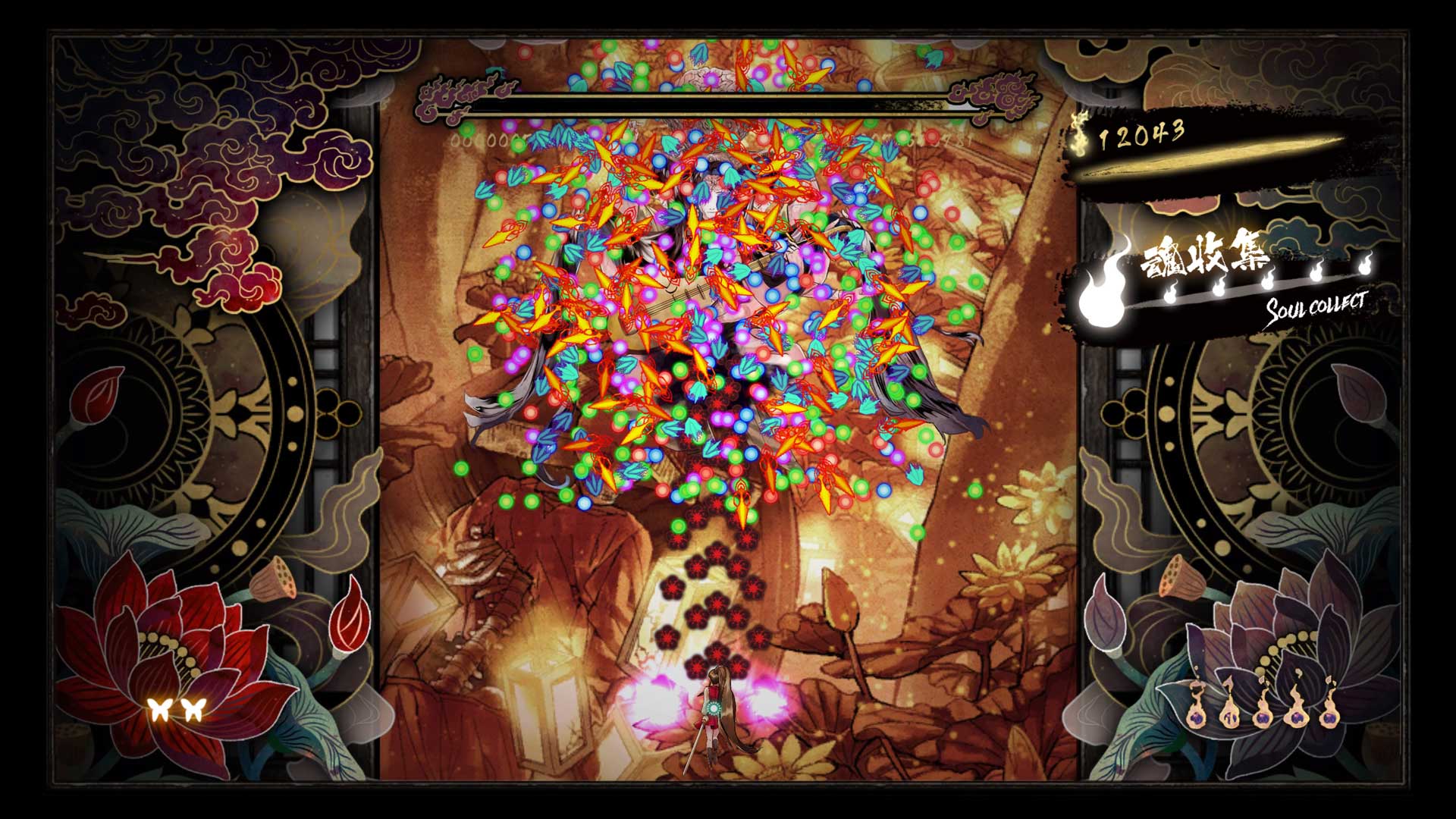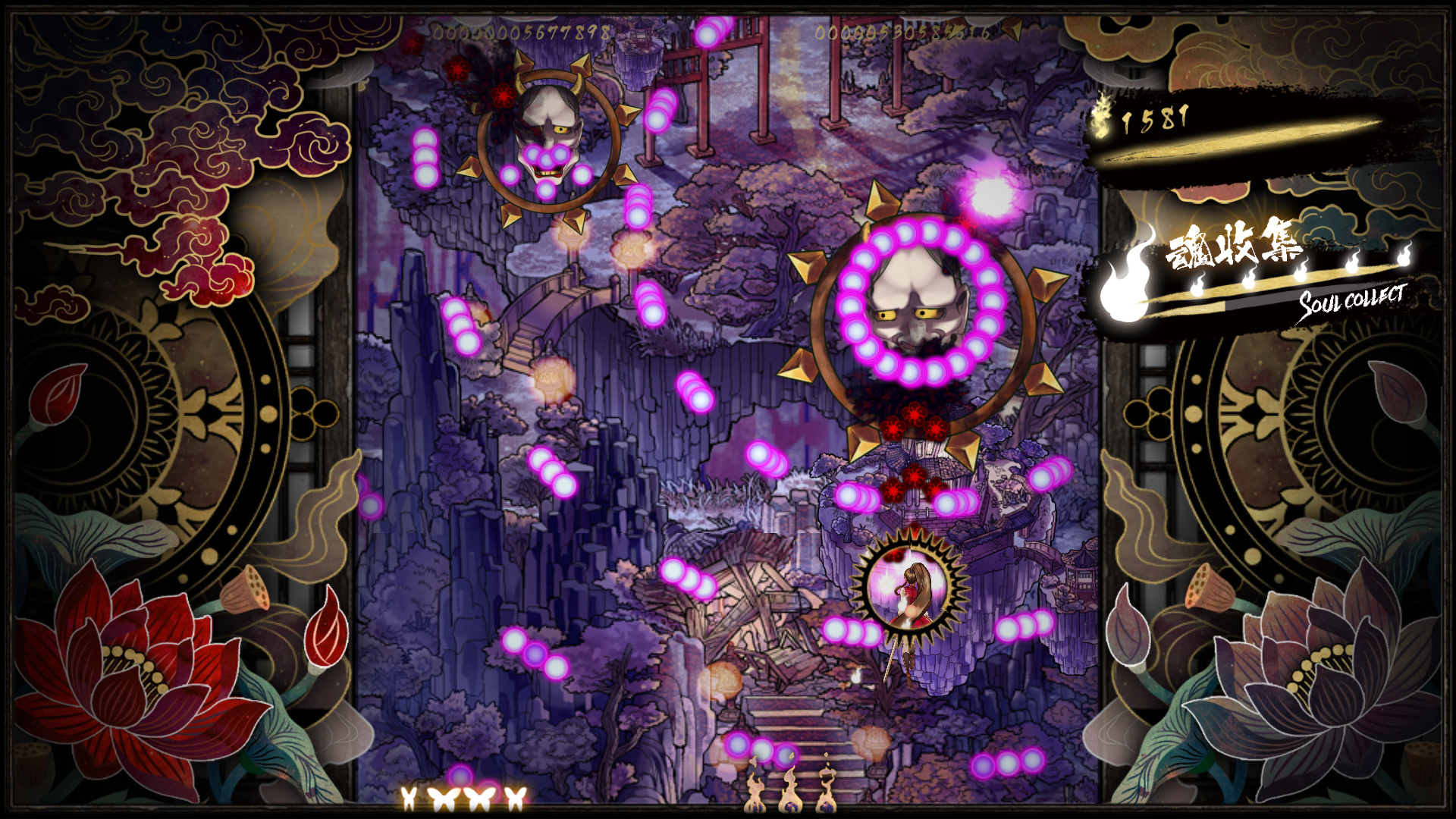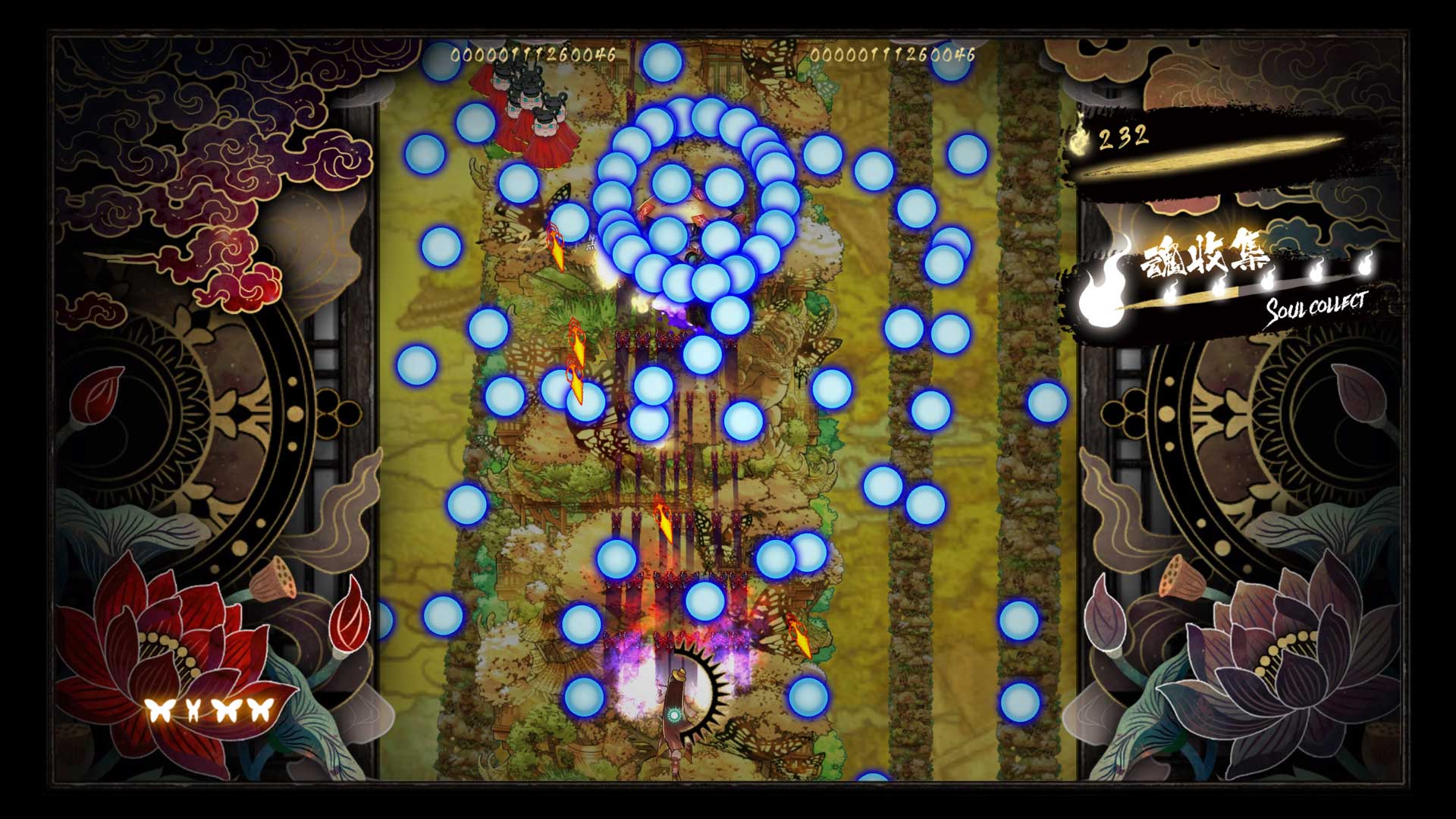While big in the arcade era, the shoot ’em up genre of games were notorious for quickly emptying the pockets of gamers. However in the west, these style of games have had fewer releases. For most of these style of games, gamers have to look to the eastern markets in order to find new releases for this style of play. Shikhondo: Soul Eater, developed by the indie team DeerFarm, attempts to blend Asian mythology with Korean bullet-hell style of play. Is the game worth picking up?
Shikhondo: Soul Eater
Publisher: Eastasiasoft/DeerFarm
Developer: DeerFarm
Platform: Windows PC, Playstation 4, Xbox One, Nintendo Switch
Release Date: Oct 10, 2017 (Steam), Aug 28, 2018 (Console Digital), Jul 27, 2018 (Limited Physical)
Players: 1-2 Player
Price: $9.99 (Digital) $34.99 (Physical)
Shikhondo does not really have any overall arching story with plot development. Instead, it uses a straight to the point explanation to set the tone of the game. Asian demons known as yokai have escaped from limbo into our world.
Throughout the world, they begin attacking the world and taking souls. The Grim Reaper and another woman simply named ‘The Girl’ set out to destroy the yokai and free the captured souls from torment.
Instead of opting for either sprite based or 3D graphics, Shikhondo uses hand-drawn artwork for the backgrounds and characters of the game. Simply put, the artwork is beautiful, almost to the point of being distracting. More often than not, I would lose my focus while looking over the artwork, only to quickly end my session with a game over.
The only time it did not look good is when the game would do a close-up on bosses, which would be improperly scaled, resulting in a blurry and pixelated image. Projectiles, on the other hand, sit in high contrast and are easy to stand out in contrast to the background and characters.

The soundtrack to the game consists mostly of EDM or electronic styles music during game play. Realistically, this is not the style of music I enjoy, however I do appreciate and honestly enjoyed what I listened to.
Each track fits the atmosphere of the levels quite nicely and truly stands out, almost as pleasing as the artwork I mentioned prior. One noticeable deviation, however, is the menu music which goes for a much more subtle and atmospheric tone. However, there’s a game play quirk when it comes to the music, and I have a complaint – both of which will be discussed later.
The sound design of the game itself is lacking compared to the music. More often than not, sound effects in the game were very minimalist and constantly reused. Throughout my time with the game I tried to keep count of unique sound effects for the game but they were so few and far between that I forgot what number I was on.
While using your special ability, firing your weapon and hitting enemies all produced sounds, not much really left a impact to really elevate the game. In all honesty, the only sounds of the game that stood out was the bosses laughing and screaming during fights, which added more to the intensity of boss fights but beyond that – nothing really jumped out to me.
The game itself comes with a few options of play. First and foremost is the traditional arcade mode. This allows you to play through levels with a set amount of lives and being able to continue during a game over. To up the ante there’s a hardcore mode, which causes a game over after being hit once.
Also, there’s a novice mode to introduce players to bullet hell shooters. Last but not least, there’s a boss rush mode. Each one of the modes has a difficulty setting you can pick, and can be played single player or local co-op. Scores of your game can be saved online to a leaderboard as well.
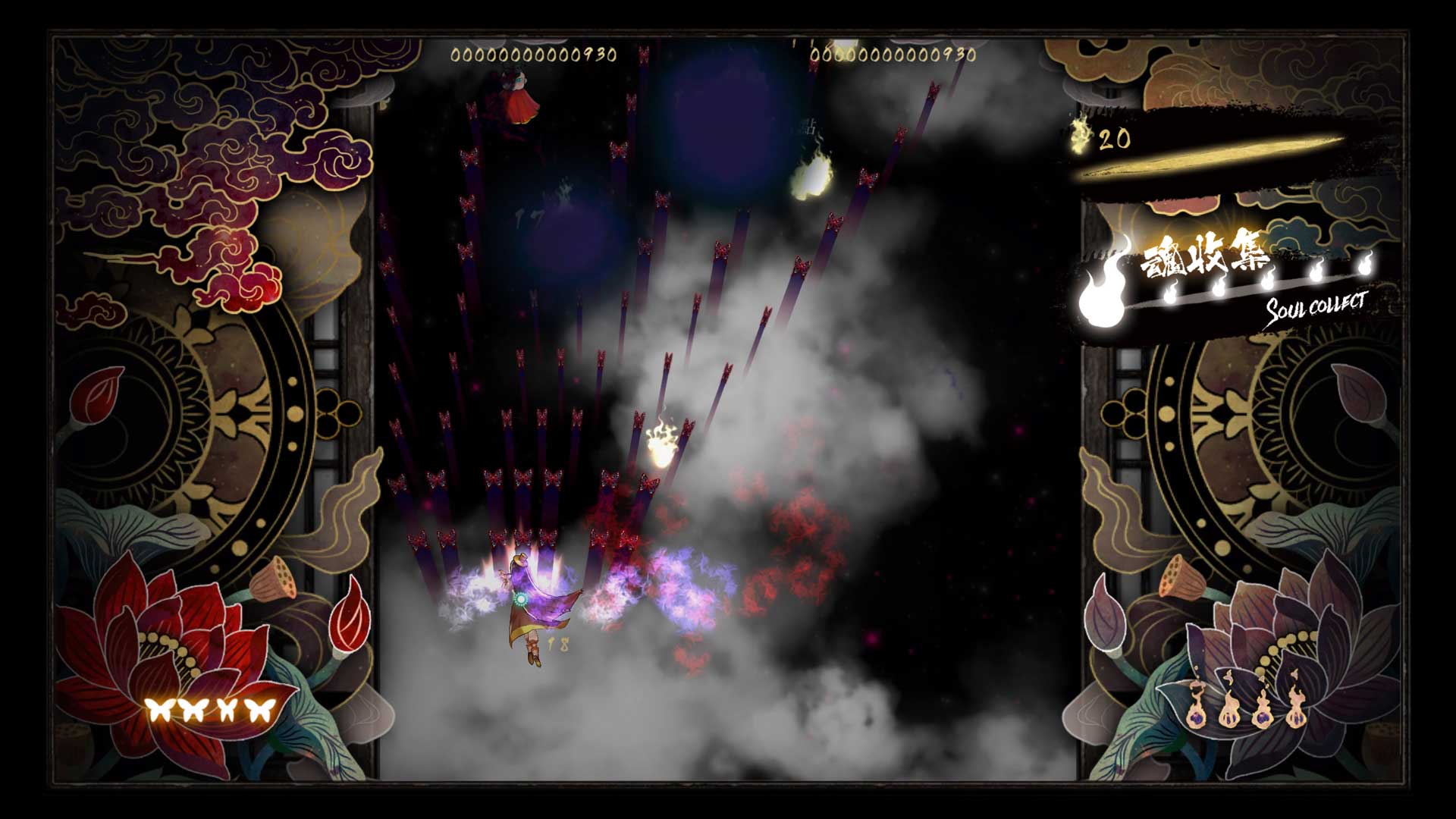
Like other shoot ’em up games, Shikhondo’s gameplay mostly does not deviate from the standard formula. Typically, you automatically advance and maneuver through the level to get up to and destroy the boss. However, this is a bullet-hell style of game, so there a major focus is dodging an excessive amount of enemy attacks.
As you go through the game there is a risk and reward system by staying as close to enemy bullets as possible to charge your special attack. Likewise, as you destroy enemies you collect souls that charge your special attack as well. Throughout my time I found myself having quite a bit of fun.
Each one of the two characters to choose from both have unique attacks as well. The Grim Reaper, for example, shoots in a wide range and has the option with a push of a button to change it to much more concentrated fire in front of her. The girl shoots in front of her and has two orbs that automatically target an enemy. Pushing a button will allow the orbs to move around freely and target enemies independently.
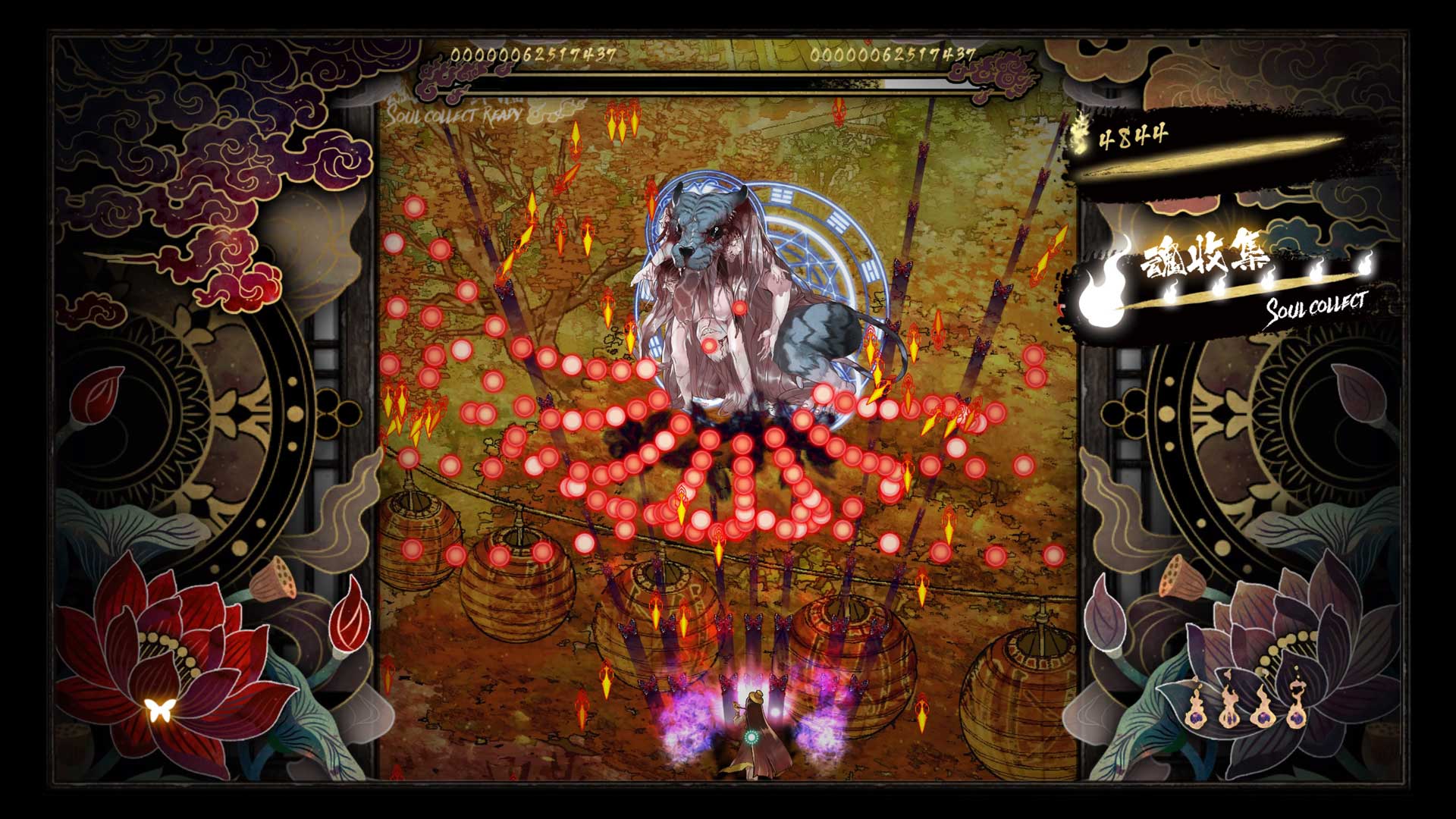
Playing through the waves of enemies on each level was a not much of a challenge on the first stage, however, it increased drastically as the game progressed. More enemies get added, which add more bullets your way and keep you trying to pay as much attention while being as careful as possible. At no point did it ever really feel unfair and have an instance of artificial difficulty. Most of my own deaths were being too eager to shoot an enemy, placing myself in a bad situation.
Each boss has two phases. The first one is more consistent with the difficulty of the level, the next phase is far more difficult and strongly changes the tone of the level. It’s almost as if the stages were a warm-up for the boss, and the first phase of the boss was a warm up to the much more difficult second stage.
The music quirk I mentioned earlier comes in as this shift happens, bringing in a much more aggressive drum and bass style. This feels somewhat out of place and feels tonally off compared to the tracks before. This would be a disruption if it did not come with a shock I was not expecting.
The bosses change to a much more vile and nightmare inspired versions of themselves with increased difficulty. For instance, a young woman becomes a floating head with a sinister smile with floating limbs from her body surrounding her, or a half tiger woman shows she’s half eaten by her lower half, complete with a sinister smile.
Each one of the bosses not only attacks with ton of projectiles, but compared to most other bullet hell games, it plays a lot more with attack patterns in this phase in relation to their theme. One such instance is an arachnid style boss shooting out an attack pattern that is somewhat reminiscent of a spiders web.
I look forward to these boss moments as they were unexpected and memorable on my first pass. Most importantly, it added a lot of uniqueness compared to other games of the same genre.
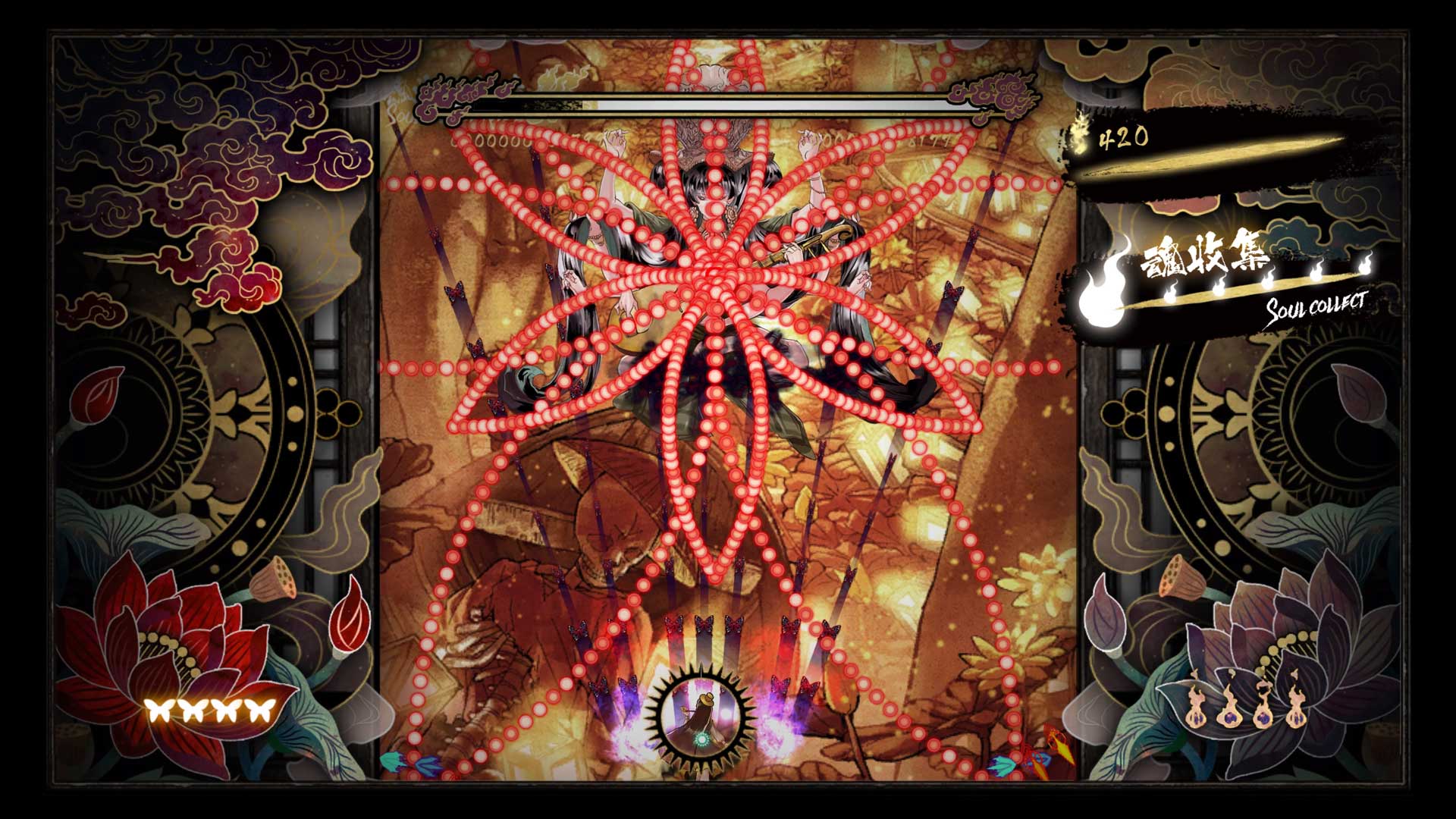
The fatal flaw comes in the form of the game being very short. With only 5 levels and despite the difficulty, I was able to complete a full run through on normal in less than 30 mins with most time being spent fighting bosses on a bad play through.
With the already lack of gameplay types and absence of hidden paths or secrets, the replay value will be low and mostly based on trying to play the game perfectly. For myself, I was very disappointed as by the end I wanted more content or something that at least extends the playtime of my game.
While I know games like these usually are short in length, this title deserves a lot more attention from the player.
As a whole, I enjoyed Shikhondo: Soul Eater. It’s a fun game with unique visuals. While I wish I could rate it higher, and I do believe the game is worth looking into, a huge flaw in its replay value cripples it, making it feel incomplete as a full package. Fans of shoot ’em up style games may find this a very unique experience.
Shikhondo: Soul Eater is available for digital download on Windows PC (via Steam), PS4, Xbox One, and Nintendo Switch. For those wanting a bit more, Play-Asia also has physical limited editions available for both PS4 and Switch, both of which include the soundtrack. If you want to pick one up, please use our affiliate link here (Switch, PS4) and use coupon code NICHE.
Shikhondo: Soul Eater was reviewed on Playstation 4 using a review copy provided by Play-Asia. You can find additional information about Niche Gamer’s review/ethics policy here.
The Verdict: 7
The Good
- Fun, challanging but fair bullet hell gameplay
- Artwork that really ads to the unique atmosphere of the game
- Initial shock I got I got from bosses second phase transformations
The Bad
- Lack Of Replay value and length of the game
- Lack of unique Sound effects
- Zooming on boss artwork becomes blurry and pixelated
